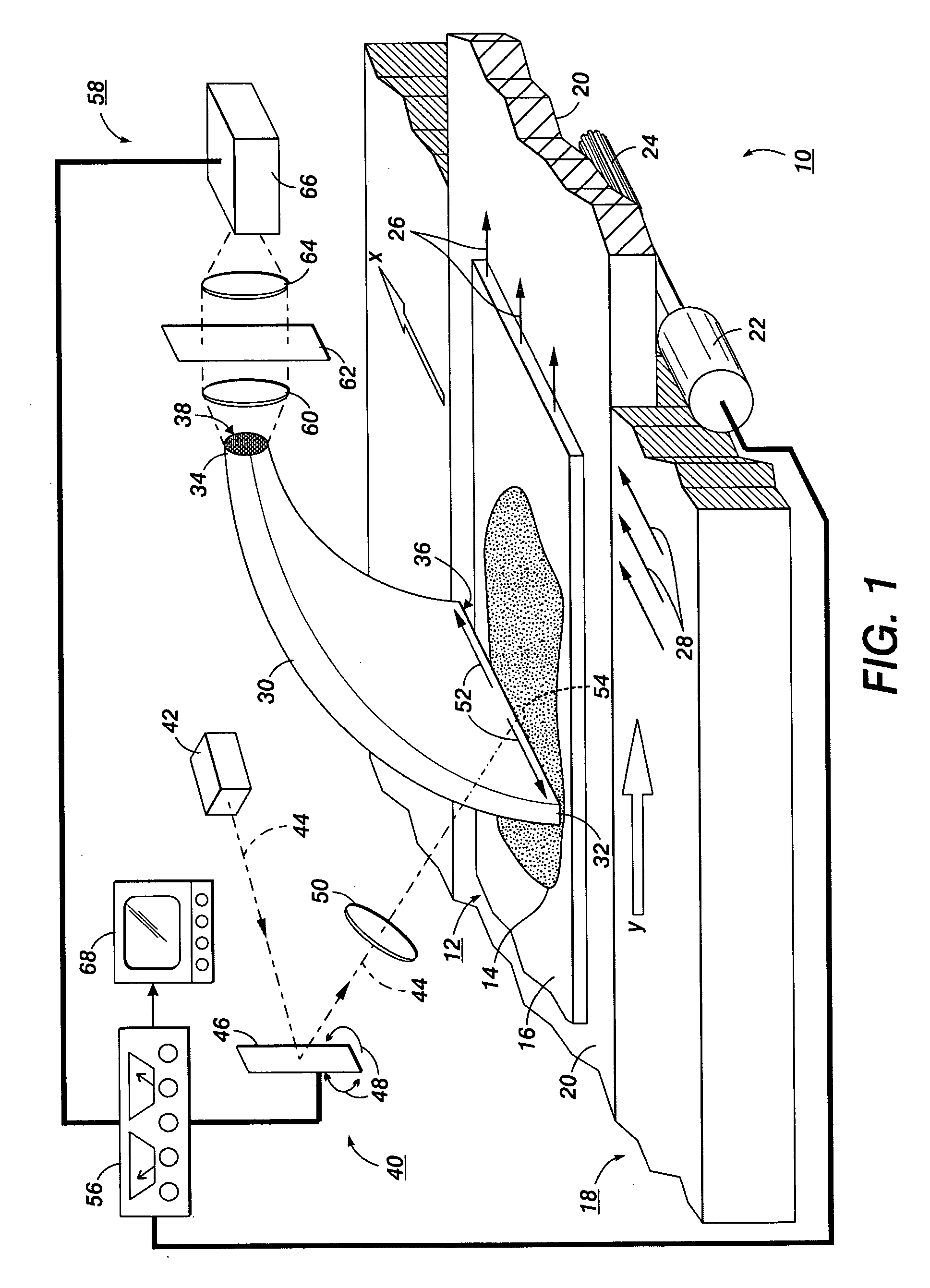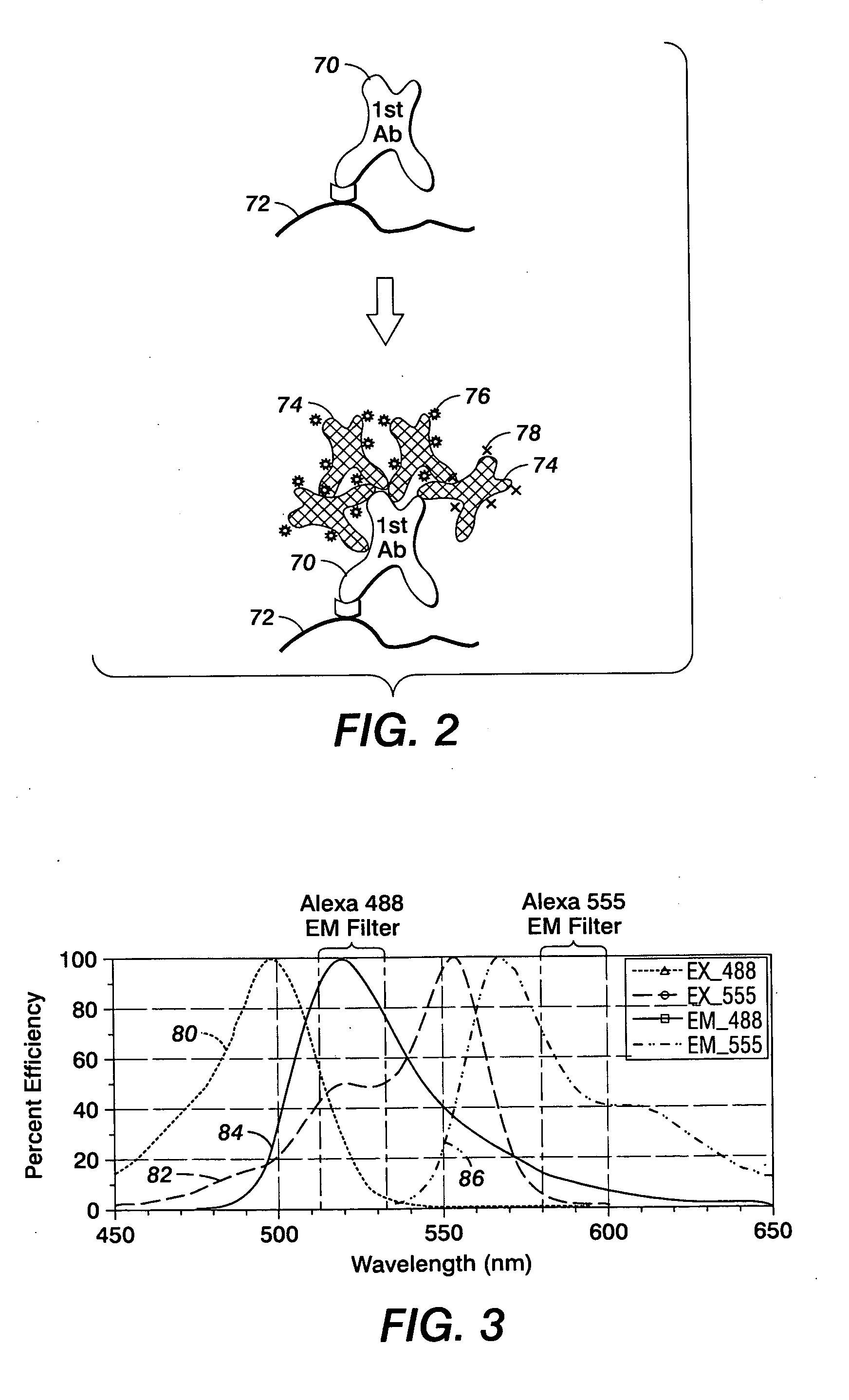Novel immunocytostaining methods for enhanced dye ratio discrimination in rare event detection
a rare event and immunocytostaining technology, applied in the field of laser based detection systems, can solve the problems of limiting the speed of scanning a sample, the speed at which the laser light can be moved, and the low spatial resolution
- Summary
- Abstract
- Description
- Claims
- Application Information
AI Technical Summary
Benefits of technology
Problems solved by technology
Method used
Image
Examples
Embodiment Construction
[0014] With reference to FIG. 1, one embodiment of an imager 10, employing the Fiber Array Scanning Technology (FAST), is depicted. Imager 10 examines a sample 12 with biological smear 14 disposed on at least a portion of a surface of a slide 16.
[0015] As is known in the art for cell studies, sample 12 is prepared by drawing a sample of a biological fluid such as, but not limited to, blood or parts of blood from a subject. In a preferred embodiment, the sample is a monolayer of cells adhered to a slide. In particular, blood cells with red cells removed. The fluid sample is treated with a fluorescent material, such as but not limited to a biological marker conjugated to dye fluorphore that selectively bonds to different kinds of biological molecules, which may be on the surface or inside the cell, such as proteins, nucleic acids or other molecules. Suitable markers are known in the art for marking a number of different cell types of clinical interest, including selected cancer cell ...
PUM
| Property | Measurement | Unit |
|---|---|---|
| diameters | aaaaa | aaaaa |
| area | aaaaa | aaaaa |
| diameter | aaaaa | aaaaa |
Abstract
Description
Claims
Application Information
 Login to View More
Login to View More - R&D
- Intellectual Property
- Life Sciences
- Materials
- Tech Scout
- Unparalleled Data Quality
- Higher Quality Content
- 60% Fewer Hallucinations
Browse by: Latest US Patents, China's latest patents, Technical Efficacy Thesaurus, Application Domain, Technology Topic, Popular Technical Reports.
© 2025 PatSnap. All rights reserved.Legal|Privacy policy|Modern Slavery Act Transparency Statement|Sitemap|About US| Contact US: help@patsnap.com



